Identification and Functional Analysis of ToBPI1/LBP and ToBPI2/LBP in Anti-Bacterial Infection of Trachinotus ovatus
Abstract
1. Introduction
2. Materials and Methods
2.1. Fish and Bacterial Strain
2.2. Fish Challenge Experiments and Tissue Sample
2.3. Gene Cloning
2.4. Bioinformatics Analysis
2.5. Expression of ToBPI1/LBP and ToBPI2/LBP in Healthy and Challenged T. ovatus
2.6. Prokaryotic Expression, Purification and Western Blotting of the Recombinant ToBPI1/LBP(rToBPI1/LBP) and ToBPI2/LBP(rToBPI2/LBP)
2.7. Antimicrobial Activity
2.8. Cell Membrane Permeability Assay
2.9. Statistical Analyses
3. Results
3.1. ToBPI1/LBP and ToBPI2/LBP Sequence Analysis
3.2. Tissue Distribution of ToBPI1/LBP and ToBPI2/LBP in Healthy T. ovatus
3.3. Expression of ToBPI1/LBP and ToBPI2/LBP in Different Tissues after Bacterial Infection
3.4. Recombinant Expression and Purification of rToBPI1/LBP and rToBPI2/LBP
3.5. Antimicrobial Activity
3.6. Permeability of Cell Membrane
4. Discussion
5. Conclusions
Author Contributions
Funding
Data Availability Statement
Conflicts of Interest
References
- Shao, Y.; Li, C.; Che, Z.; Zhang, P.; Zhang, W.; Duan, X.; Li, Y. Cloning and characterization of two lipopolysaccharide-binding protein/bactericidal permeability-increasing protein (LBP/BPI) genes from the sea cucumber Apostichopus japonicus with diversified function in modulating ROS production. Dev. Comp. Immunol. 2015, 52, 88–97. [Google Scholar] [CrossRef]
- Mao, Y.; Zhou, C.; Zhu, L.; Huang, Y.; Yan, T.; Fang, J.; Zhu, W. Identification and expression analysis on bactericidal permeability-increasing protein (BPI)/lipopolysaccharide-binding protein (LBP) of ark shell, Scapharca broughtonii. Fish Shellfish. Immunol. 2013, 35, 642–652. [Google Scholar] [CrossRef]
- Tang, L.; Liang, Y.; Jiang, Y.; Liu, S.; Zhang, F.; He, X.; Wang, T.; Zhou, Y.; Zhong, H.; Yan, J. Identification and expression analysis on bactericidal permeability-increasing protein/lipopolysaccharide-binding protein of blunt snout bream, Megalobrama amblycephala. Fish Shellfish. Immunol. 2015, 45, 630–640. [Google Scholar] [CrossRef]
- Su, J.; Li, H.; Hu, J.; Wang, D.; Zhang, F.; Fu, Z.; Han, F. LcCCL28-25, Derived from Piscine Chemokine, Exhibits Antimicrobial Activity against Gram-Negative and Gram-Positive Bacteria In Vitro and In Vivo. Microbiol. Spectr. 2022, 10, e0251521. [Google Scholar] [CrossRef]
- Bin Hafeez, A.; Jiang, X.; Bergen, P.J.; Zhu, Y. Antimicrobial Peptides: An Update on Classifications and Databases. Int. J. Mol. Sci. 2021, 22, 11691. [Google Scholar] [CrossRef]
- Kim, J.W.; Gerwick, L.; Park, C.I. Molecular identification and expression analysis of two distinct BPI/LBPs (bactericidal permeability-increasing protein/LPS-binding protein) from rock bream, Oplegnathus fasciatus. Fish Shellfish. Immunol. 2012, 33, 75–84. [Google Scholar] [CrossRef] [PubMed]
- Weiss, J. Bactericidal/permeability-increasing protein (BPI) and lipopolysaccharide-binding protein (LBP): Structure, function and regulation in host defence against Gram-negative bacteria. Biochem. Soc. Trans. 2003, 31, 785–790. [Google Scholar] [CrossRef] [PubMed]
- Schultz, H.; Weiss, J.P. The bactericidal/permeability-increasing protein (BPI) in infection and inflammatory disease. Clin. Chim. Acta 2007, 384, 12–23. [Google Scholar] [CrossRef] [PubMed]
- Zhou, Z.P.; Xia, X.Y.; Guo, Q.S.; Xu, C. Bactericidal/permeability-increasing protein originates in both the testis and the epididymis and localizes in mouse spermatozoa. Asian J. Androl. 2014, 16, 309–313. [Google Scholar] [CrossRef] [PubMed]
- Wittmann, I.; Schonefeld, M.; Aichele, D.; Groer, G.; Gessner, A.; Schnare, M. Murine bactericidal/permeability-increasing protein inhibits the endotoxic activity of lipopolysaccharide and gram-negative bacteria. J. Immunol. 2008, 180, 7546–7552. [Google Scholar] [CrossRef] [PubMed]
- Nishimura, H.; Gogami, A.; Miyagawa, Y.; Nanbo, A.; Murakami, Y.; Baba, T.; Nagasawa, S. Bactericidal/permeability-increasing protein promotes complement activation for neutrophil-mediated phagocytosis on bacterial surface. Immunology 2001, 103, 519–525. [Google Scholar] [CrossRef] [PubMed]
- Lee, S.; Elvitigala, D.A.S.; Lee, S.; Kim, H.C.; Park, H.C.; Lee, J. Molecular characterization of a bactericidal permeability-increasing protein/lipopolysaccharide-binding protein from black rockfish (Sebastes schlegelii): Deciphering its putative antibacterial role. Dev. Comp. Immunol. 2017, 67, 266–275. [Google Scholar] [CrossRef] [PubMed]
- Sun, Y.Y.; Sun, L. A Teleost Bactericidal Permeability-Increasing Protein Kills Gram-Negative Bacteria, Modulates Innate Immune Response, and Enhances Resistance against Bacterial and Viral Infection. PLoS ONE 2016, 11, e0154045. [Google Scholar] [CrossRef]
- Zhou, S.; Jiang, G.; Zhu, Y.; Liu, L.; Liu, D.; Diao, J.; Liu, H.; Xiu, Y. Molecular identification and function analysis of bactericidal permeability-increasing protein/LPS-binding protein 1 (BPI/LBP1) from turbot (Scophthalmus maximus). Fish Shellfish. Immunol. 2019, 87, 499–506. [Google Scholar] [CrossRef]
- Cai, X.H.; Peng, Y.H.; Wang, Z.C.; Huang, T.; Xiong, X.Y.; Huang, Y.C.; Wang, B.; Xu, L.W.; Wu, Z.H. Characterization and identification of streptococci from golden pompano in China. Dis. Aquat. Organ 2016, 119, 207–217. [Google Scholar] [CrossRef] [PubMed]
- Gao, J.; Guo, H.-Y.; Liu, M.-J.; Zhu, K.-C.; Liu, B.; Liu, B.-S.; Zhang, N.; Jiang, S.-G.; Zhang, D.-C. Transcriptome Analysis of the Immune Process of Golden Pompano (Trachinotus ovatus) Infected with Streptococcus agalactiae. Fishes 2023, 8, 52. [Google Scholar] [CrossRef]
- Wu, Y.; Du, H.H.; Zhu, L.; Zhao, N.; Zhang, S.; Cao, Z.; Zhou, Y.; Sun, Y. Bactericidal permeability-increasing protein/LPS-binding protein (BPI/LBP) enhances resistance of golden pompano Trachinotus ovatus against bacterial infection. Fish Shellfish. Immunol. 2022, 131, 872–880. [Google Scholar] [CrossRef] [PubMed]
- Zhou, Y.; Lei, Y.; Cao, Z.; Chen, X.; Sun, Y.; Xu, Y.; Guo, W.; Wang, S.; Liu, C. A β-defensin gene of Trachinotus ovatus might be involved in the antimicrobial and antiviral immune response. Dev. Comp. Immunol. 2019, 92, 105–115. [Google Scholar] [CrossRef] [PubMed]
- Ding, M.; Fan, J.; Wang, W.; Wang, H.; Liu, H. Molecular characterization, expression and antimicrobial activity of complement factor D in Megalobrama amblycephala. Fish Shellfish. Immunol. 2019, 89, 43–51. [Google Scholar] [CrossRef]
- Liu, Y.; Zha, H.; Han, X.; Yu, S.; Chai, Y.; Zhong, J.; Zhu, Q. Molecular characterization and functional analysis of the bactericidal permeability-increasing protein/LPS-binding protein (BPI/LBP) from roughskin sculpin (Trachidermus fasciatus). Dev. Comp. Immunol. 2021, 123, 104133. [Google Scholar] [CrossRef]
- Inagawa, H.; Honda, T.; Kohchi, C.; Nishizawa, T.; Yoshiura, Y.; Nakanishi, T.; Yokomizo, Y.; Soma, G. Cloning and characterization of the homolog of mammalian lipopolysaccharide-binding protein and bactericidal permeability-increasing protein in rainbow trout Oncorhynchus mykiss. J. Immunol. 2002, 168, 5638–5644. [Google Scholar] [CrossRef]
- Kono, T.; Sakai, M. Molecular cloning of a novel bactericidal permeability-increasing protein/lipopolysaccharide-binding protein (BPI/LBP) from common carp Cyprinus carpio L. and its expression. Mol. Immunol. 2003, 40, 269–278. [Google Scholar] [CrossRef]
- Theprungsirikul, J.; Skopelja-Gardner, S.; Rigby, W.F.C. Killing three birds with one BPI: Bactericidal, opsonic, and anti-inflammatory functions. J. Transl. Autoimmun. 2021, 4, 100105. [Google Scholar] [CrossRef] [PubMed]
- Beamer, L.J.; Carroll, S.F.; Eisenberg, D. The BPI/LBP family of proteins: A structural analysis of conserved regions. Protein Sci. 1998, 7, 906–914. [Google Scholar] [CrossRef] [PubMed]
- Nam, B.H.; Ahn, K.J.; Kim, Y.O.; Kong, H.J.; Kim, W.J.; Kim, H.S.; Lee, S.J.; Kim, K.K. Molecular cloning and characterization of LPS-binding protein/bactericidal permeability-increasing protein (LBP/BPI) from olive flounder, Paralichthys olivaceus. Vet. Immunol. Immunopathol. 2010, 133, 256–263. [Google Scholar] [CrossRef] [PubMed]
- Flajnik, M.F. A cold-blooded view of adaptive immunity. Nat. Rev. Immunol. 2018, 18, 438–453. [Google Scholar] [CrossRef] [PubMed]
- Ofek, T.; Lalzar, M.; Izhaki, I.; Halpern, M. Intestine and spleen microbiota composition in healthy and diseased tilapia. Anim. Microbiome 2022, 4, 50. [Google Scholar] [CrossRef]
- Press, C.M.; Evensen, Ø. The morphology of the immune system in teleost fishes. Fish Shellfish. Immunol. 1999, 9, 309–318. [Google Scholar] [CrossRef]
- Jiang, C.; Wang, S. Identification and functional characterization of bactericidal permeability/increasing protein (BPI) from frog Nanorana yunnanensis (Paa yunnanensis). Dev. Comp. Immunol. 2022, 137, 104517. [Google Scholar] [CrossRef]
- Horwitz, A.H.; Williams, R.E.; Liu, P.S.; Nadell, R. Bactericidal/permeability-increasing protein inhibits growth of a strain of Acholeplasma laidlawii and L forms of the gram-positive bacteria Staphylococcus aureus and Streptococcus pyogenes. Antimicrob. Agents Chemother. 1999, 43, 2314–2316. [Google Scholar] [CrossRef]
- Wiese, A.; Brandenburg, K.; Carroll, S.F.; Rietschel, E.T.; Seydel, U. Mechanisms of action of bactericidal/permeability-increasing protein BPI on reconstituted outer membranes of gram-negative bacteria. Biochemistry 1997, 36, 10311–10319. [Google Scholar] [CrossRef] [PubMed]
- Bulow, S.; Zeller, L.; Werner, M.; Toelge, M.; Holzinger, J.; Entzian, C.; Schubert, T.; Waldow, F.; Gisch, N.; Hammerschmidt, S.; et al. Bactericidal/Permeability-Increasing Protein Is an Enhancer of Bacterial Lipoprotein Recognition. Front. Immunol. 2018, 9, 2768. [Google Scholar] [CrossRef] [PubMed]
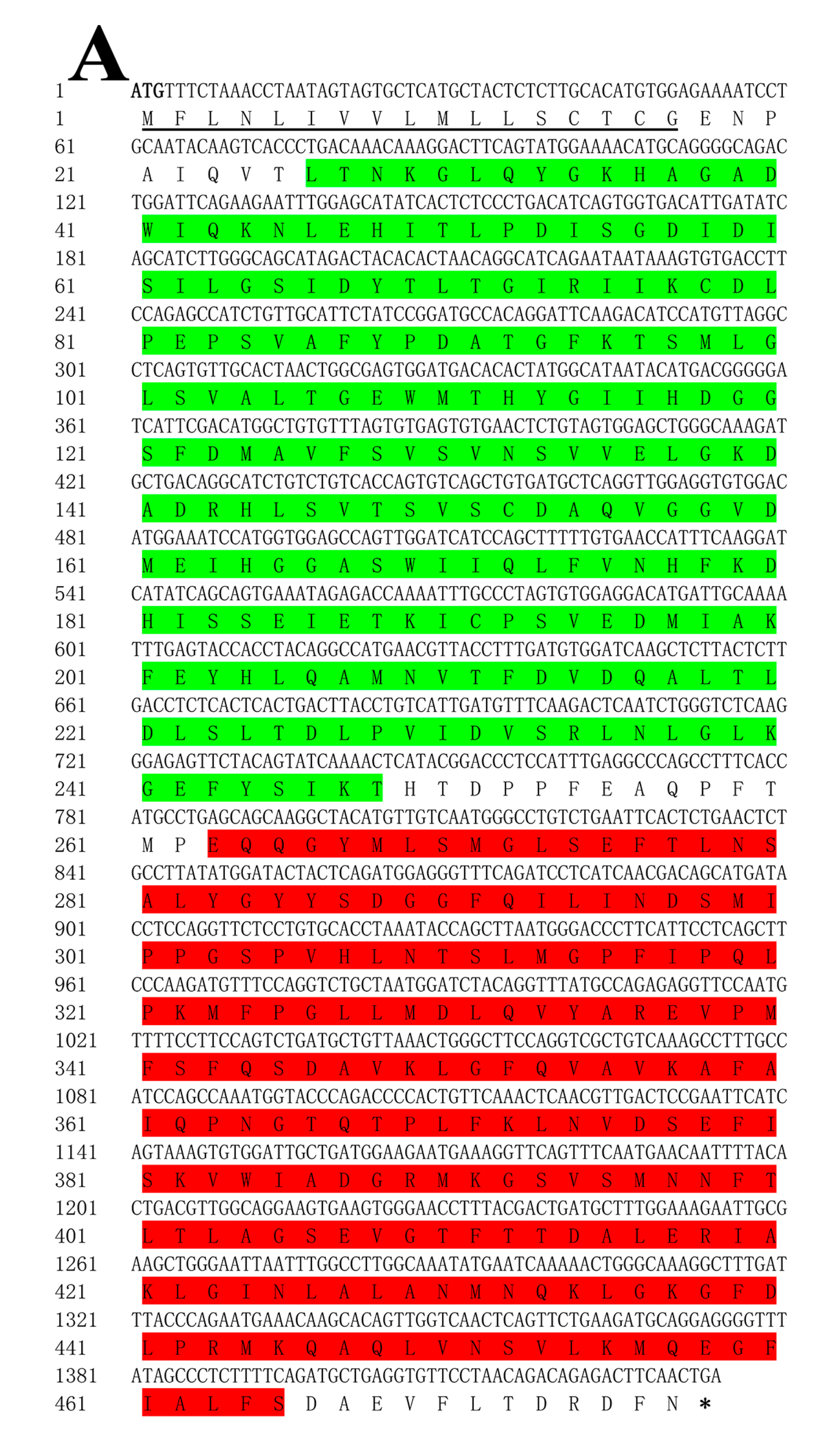
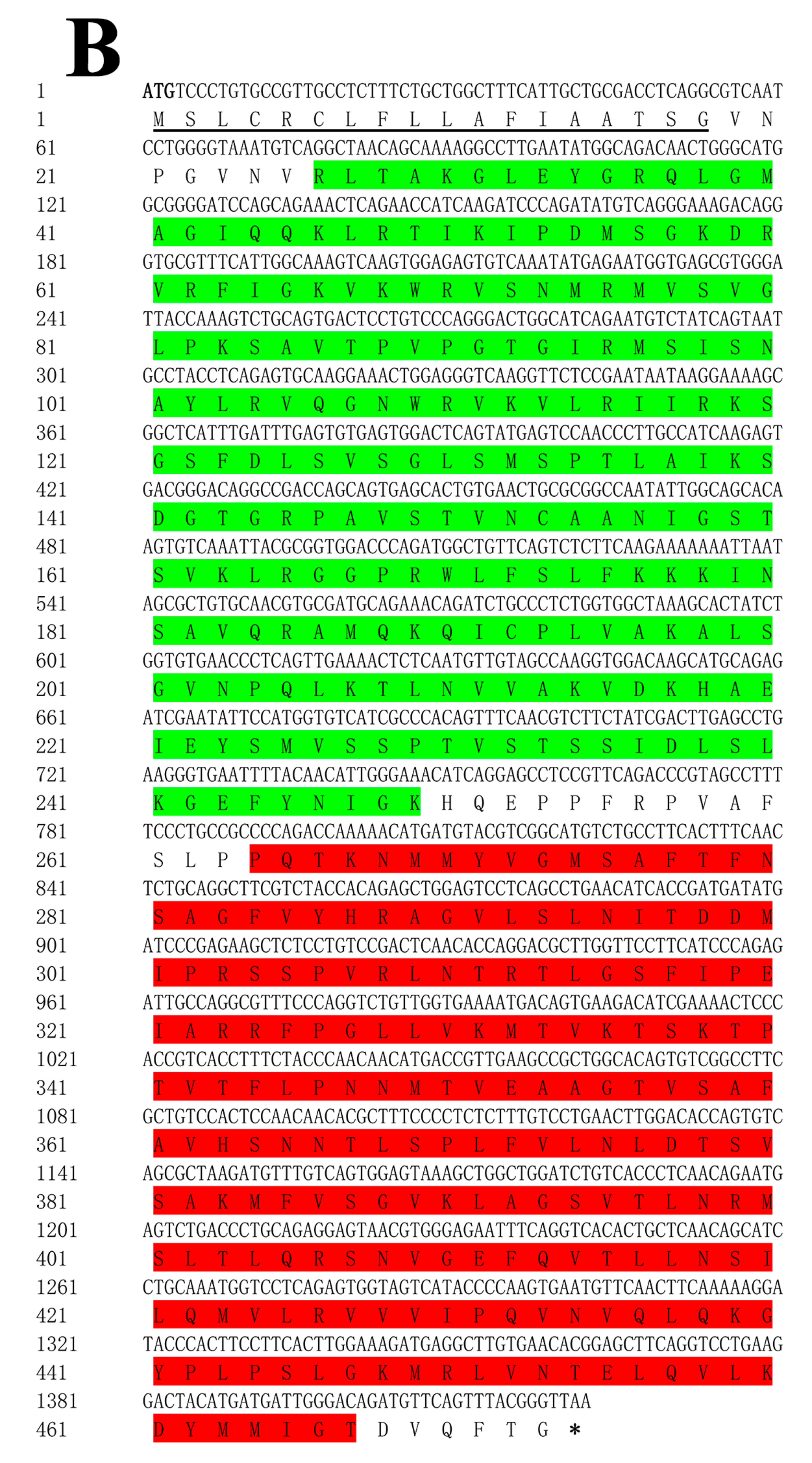

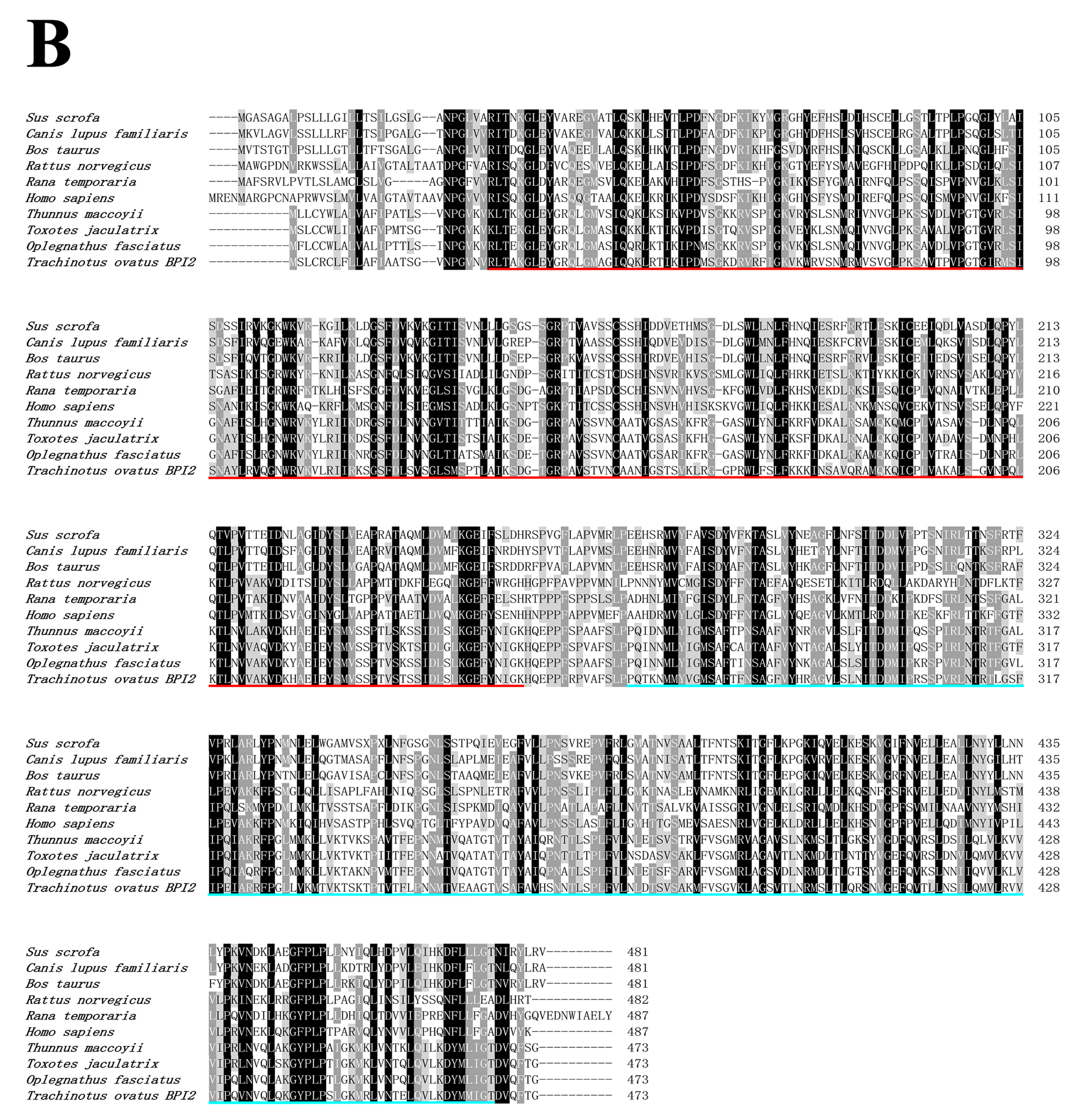

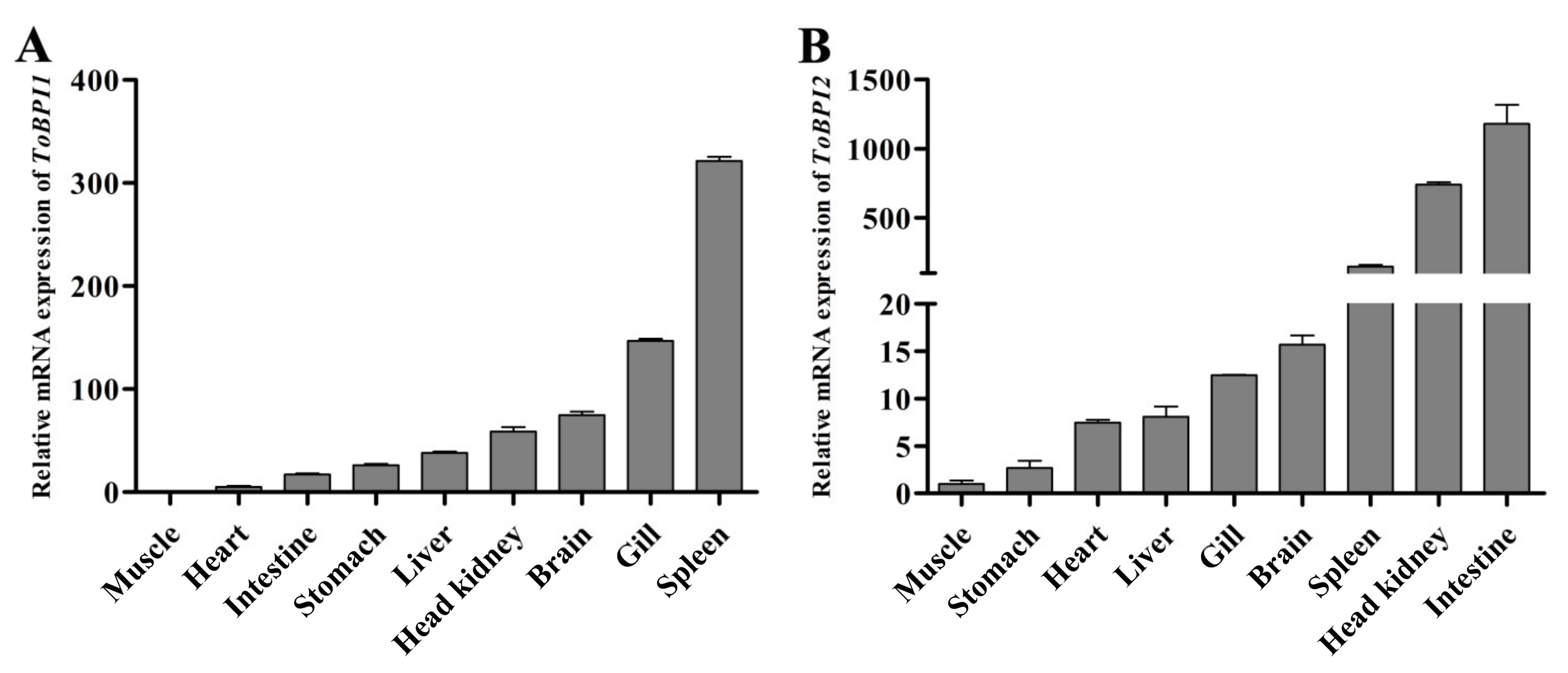
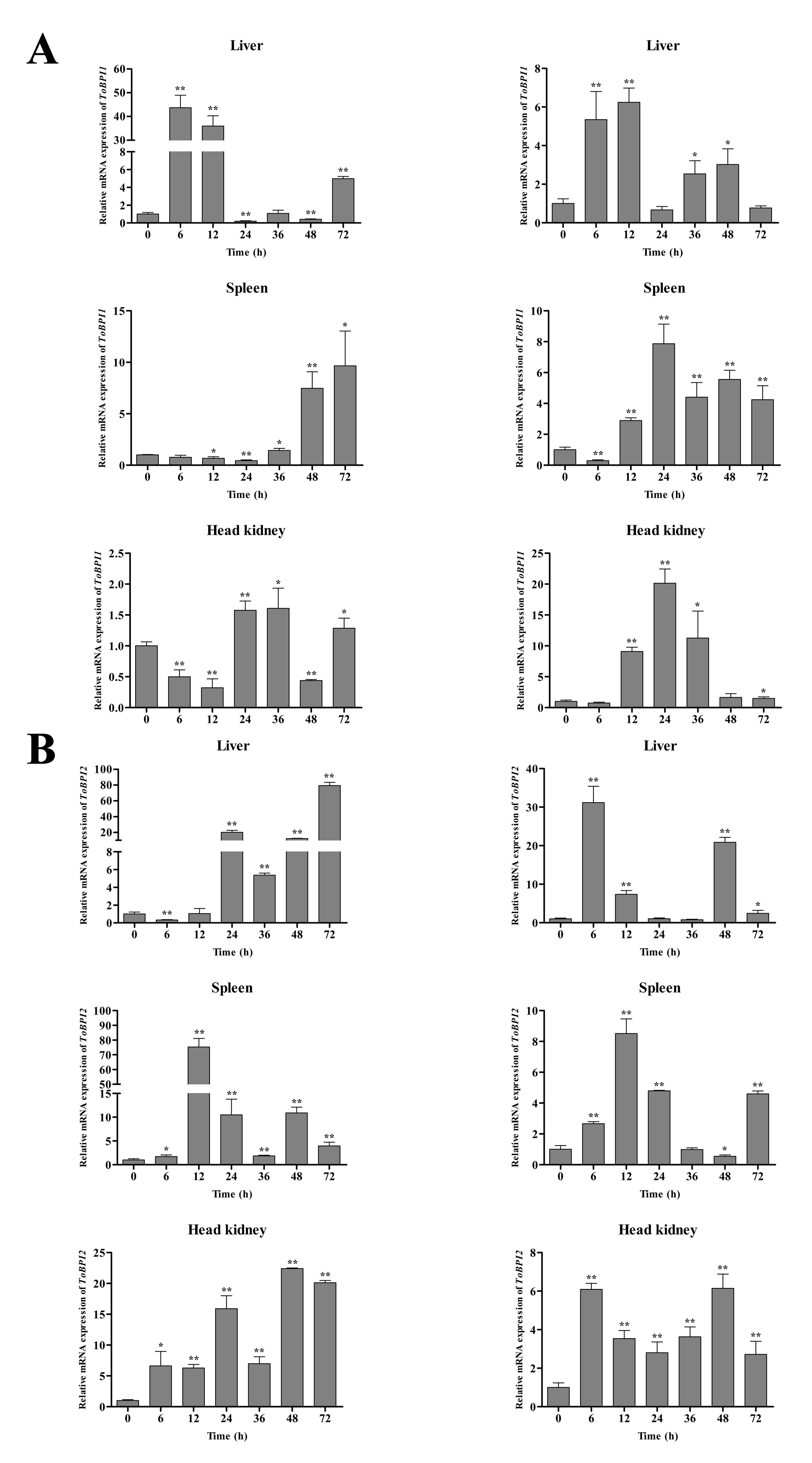
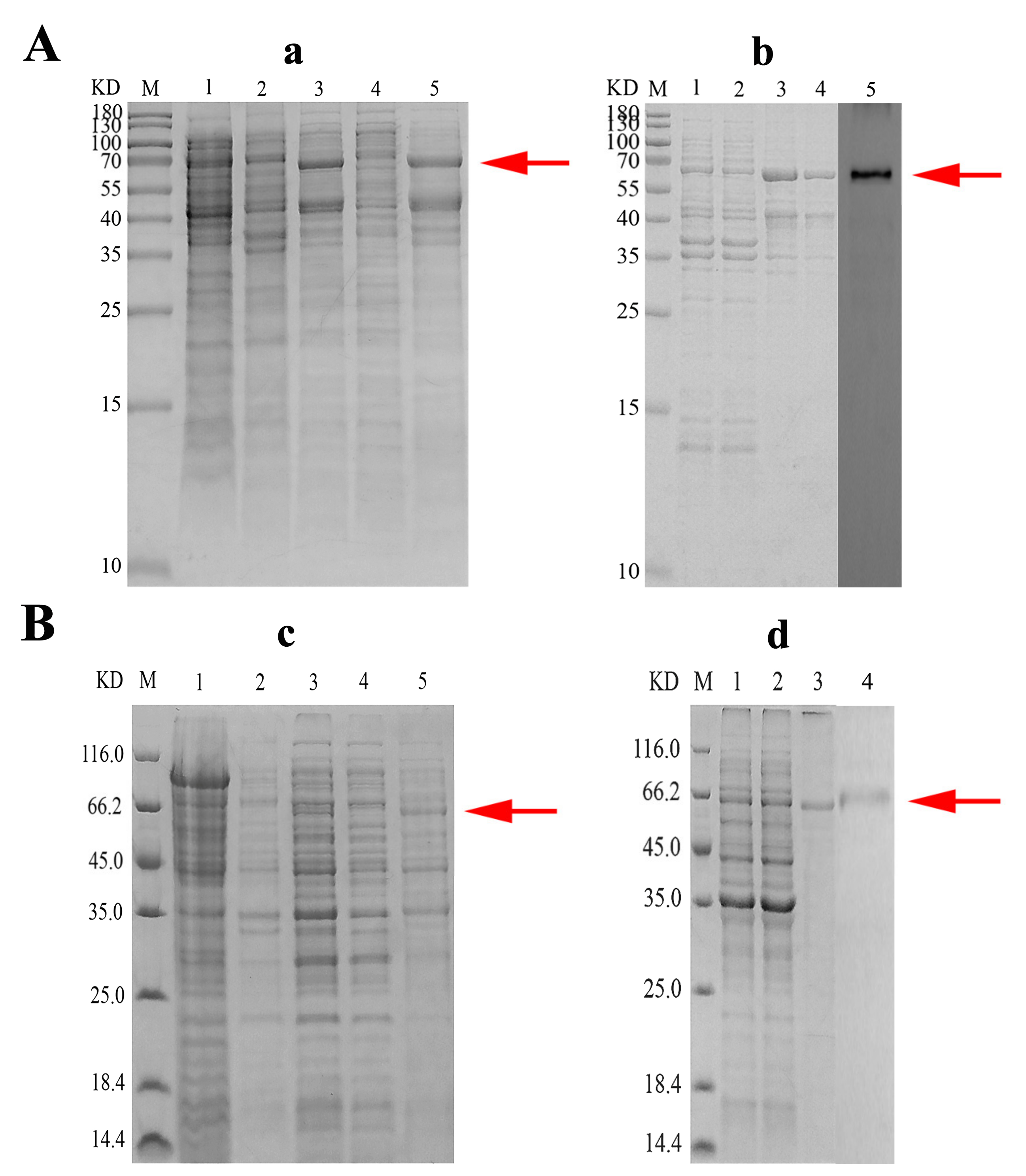

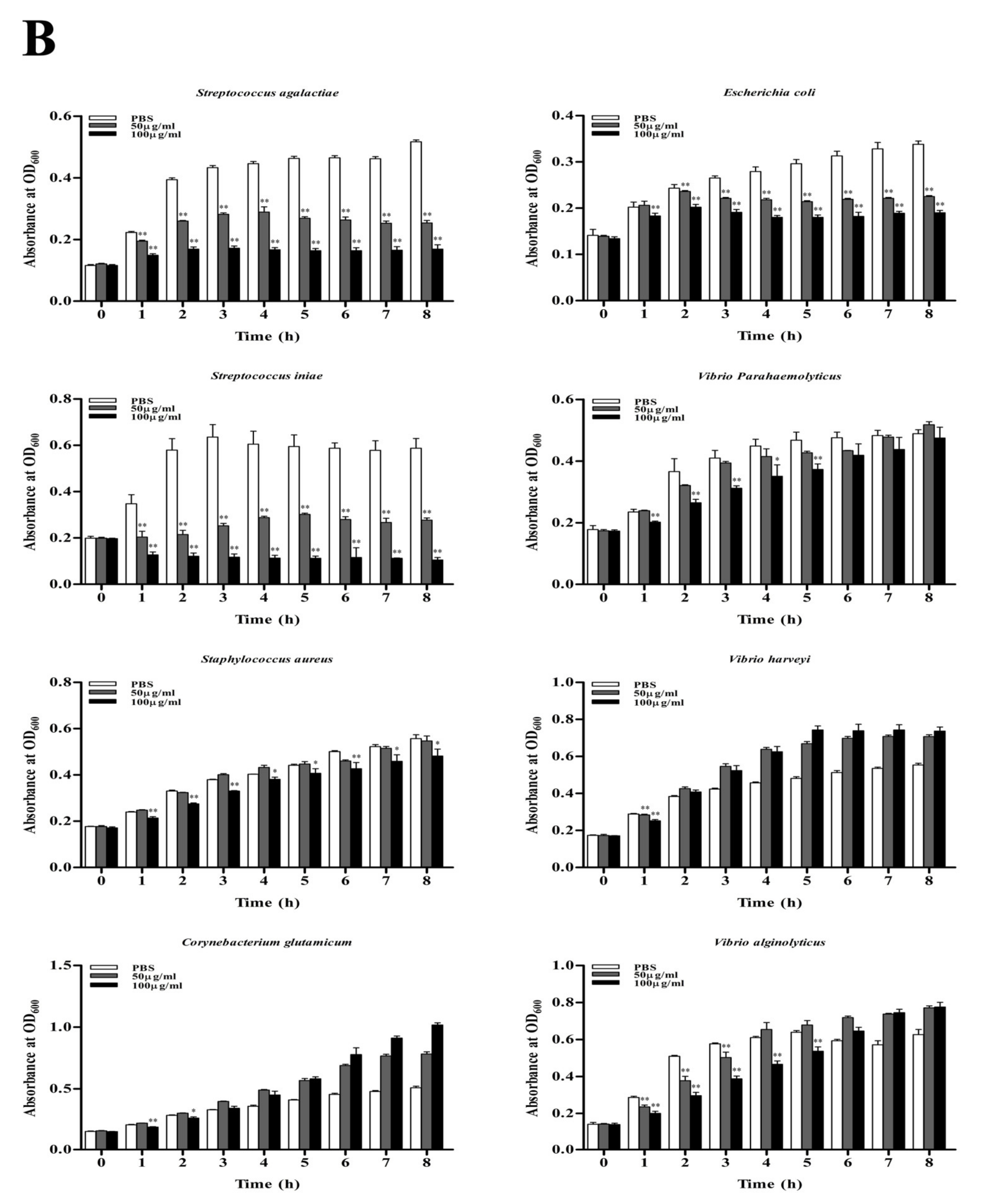

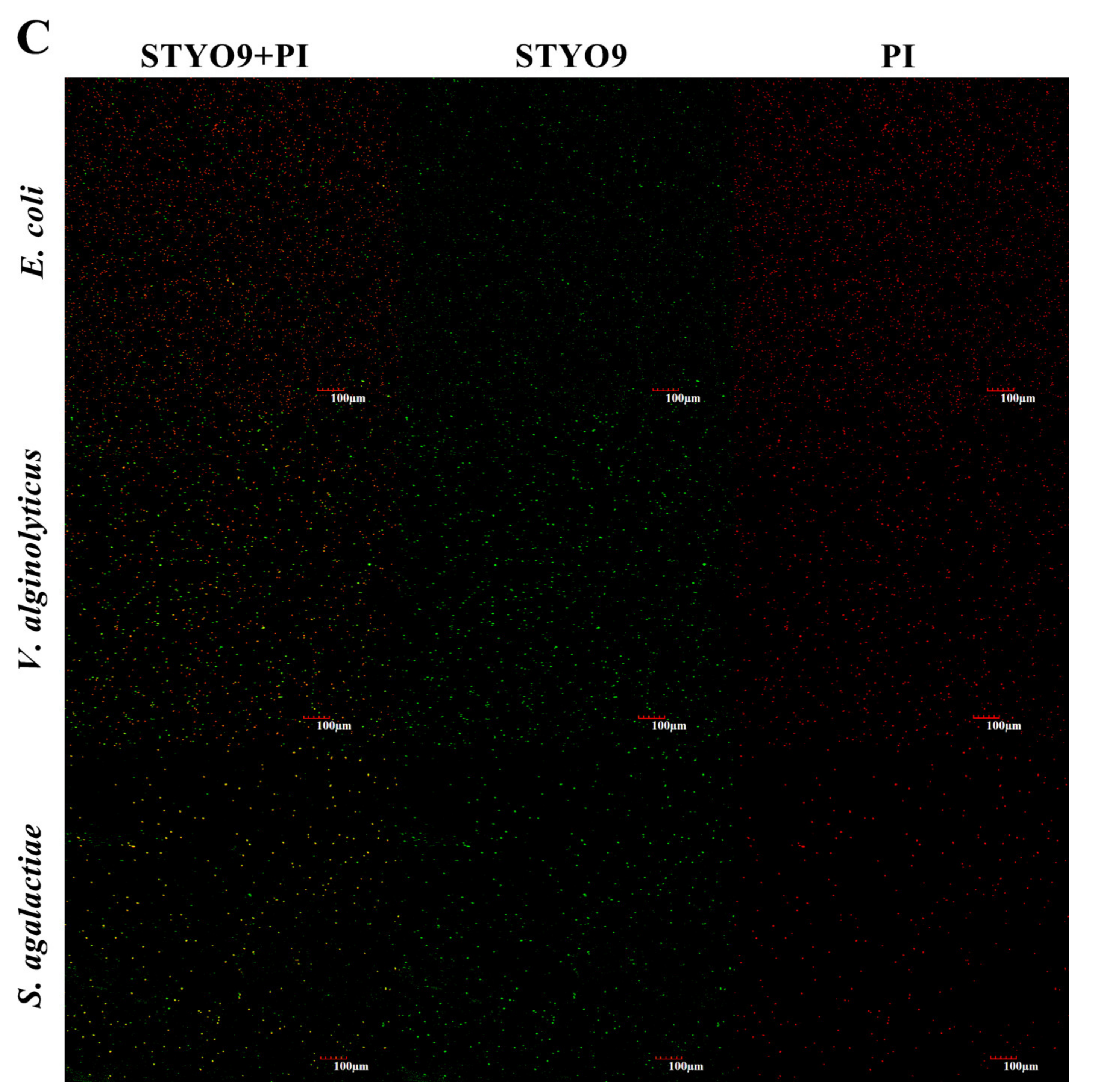
| Primers Name | Sequence 5′–3′ | Purpose |
|---|---|---|
| ToBPI1/LBP -F | ATGTTTCTAAACCTAATAGTAGTGCTCATGC | Cloning |
| ToBPI1/LBP -R | TCAGTTGAAGTCTCTGTCTGTTAGG | Cloning |
| ToBPI2/LBP -F | ATGTCCCTGTGCCGTTG | Cloning |
| ToBPI2/LBP -R | TTAACCCGTAAACTGAACATCTGTC | Cloning |
| ToBPI1/LBP -F | CCTTTGCCATCCAGCCAAAT | Real-time PCR |
| ToBPI1/LBP -R | CCACTTCACTTCCTGCCAAC | Real-time PCR |
| ToBPI2/LBP -F | GCCCACAGTTTCAACGTCTT | Real-time PCR |
| ToBPI2/LBP -R | GTGTTGAGTCGGACAGGAGA | Real-time PCR |
| β-action-F | TACGAGCTGCCTGACGGACA | Real-time PCR |
| β-action-R | GGCTGTGATCTCCTTCTGC | Real-time PCR |
| mToBPI1 LBP-F | CGCGGATCCGAAAATCCTGCAATACAAGTC | Prokaryotic expression |
| mToBPI1/LBP-R | CCGCTCGAGGTTGAAGTCTCTGTCTGTTAGG | Prokaryotic expression |
| mToBPI2/LBP-F | CGGAATTCGTCAATCCTGGGGTAAATGT | Prokaryotic expression |
| mToBPI2/LBP-R | CCCTCGAGACCCGTAAACTGAACATCTGT | Prokaryotic expression |
Disclaimer/Publisher’s Note: The statements, opinions and data contained in all publications are solely those of the individual author(s) and contributor(s) and not of MDPI and/or the editor(s). MDPI and/or the editor(s) disclaim responsibility for any injury to people or property resulting from any ideas, methods, instructions or products referred to in the content. |
© 2023 by the authors. Licensee MDPI, Basel, Switzerland. This article is an open access article distributed under the terms and conditions of the Creative Commons Attribution (CC BY) license (https://creativecommons.org/licenses/by/4.0/).
Share and Cite
Bian, Z.-C.; Cai, X.-H.; Tan, K.A.; Wang, Y.-D.; Huang, Z.; Kwan, K.Y.; Xu, P. Identification and Functional Analysis of ToBPI1/LBP and ToBPI2/LBP in Anti-Bacterial Infection of Trachinotus ovatus. Genes 2023, 14, 826. https://doi.org/10.3390/genes14040826
Bian Z-C, Cai X-H, Tan KA, Wang Y-D, Huang Z, Kwan KY, Xu P. Identification and Functional Analysis of ToBPI1/LBP and ToBPI2/LBP in Anti-Bacterial Infection of Trachinotus ovatus. Genes. 2023; 14(4):826. https://doi.org/10.3390/genes14040826
Chicago/Turabian StyleBian, Ze-Chang, Xiao-Hui Cai, Kian Ann Tan, Ya-Dan Wang, Zhuang Huang, Kit Yue Kwan, and Peng Xu. 2023. "Identification and Functional Analysis of ToBPI1/LBP and ToBPI2/LBP in Anti-Bacterial Infection of Trachinotus ovatus" Genes 14, no. 4: 826. https://doi.org/10.3390/genes14040826
APA StyleBian, Z.-C., Cai, X.-H., Tan, K. A., Wang, Y.-D., Huang, Z., Kwan, K. Y., & Xu, P. (2023). Identification and Functional Analysis of ToBPI1/LBP and ToBPI2/LBP in Anti-Bacterial Infection of Trachinotus ovatus. Genes, 14(4), 826. https://doi.org/10.3390/genes14040826





